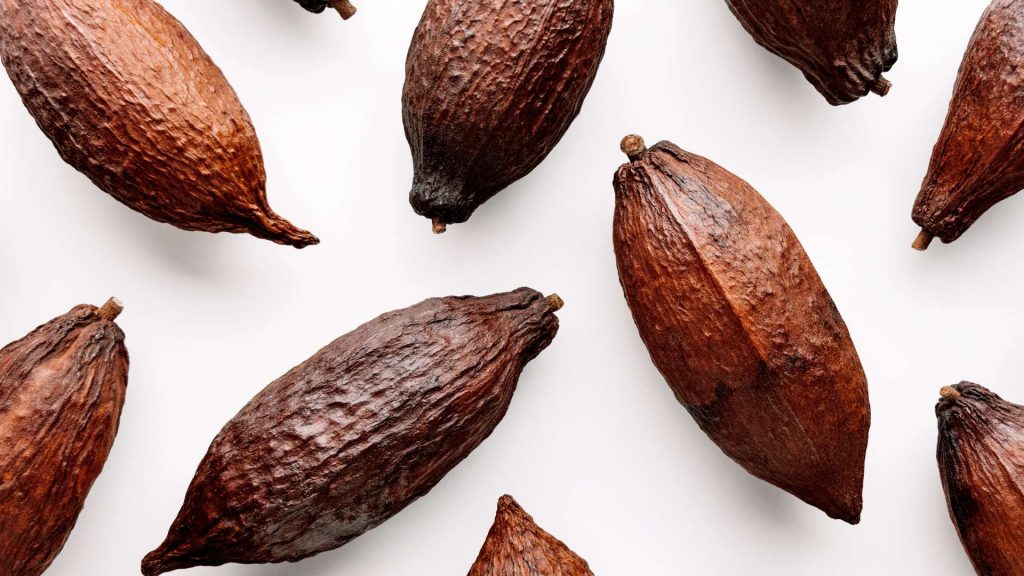How cocoa powder is made? Below is simple cocoa powder manufacturing process (step by step)
Step by step Cocoa Powder Manufacturing Process
1. Cleaning & Sorting
Raw beans pass through sieves, destoners, magnets, and optical sorters to remove stones, metal, sticks, and defective beans.
2. Roasting (or Pre-treatment + Roasting)
Purpose: develop flavor, reduce moisture, aid shell removal, reduce microbial load.
Typical: 110–150 °C, 15–45 min depending on equipment (drum, continuous, fluid-bed) and bean origin.
3. Winnowing
Cracked beans are separated into nibs (kernel) and shells. Shells are saved for biomass fuel or animal feed.
4. Grinding to Cocoa Liquor (Cocoa Mass)
Nibs are ground via hammer mills, pin mills, or stone/ball mills to form a viscous paste (≈ 50–56% cocoa butter). Fine grinding improves liquor fineness (<30 μm for premium).
5. (Optional) Alkalization—Nib or Liquor
– Nib alkalization: nibs sprayed/tumbled with alkali, then roasted to fix color/flavor.
– Liquor alkalization: alkali mixed into liquor under controlled temperature and pressure to adjust pH and color.
6. Hydraulic/Expeller Pressing
Cocoa liquor is pressed at high pressure to separate cocoa butter from press cake.
– Butter yield depends on target powder fat.
– Press cakes are discharged as discs or chips.
7. Cake Cooling & Stabilization
Cooled rapidly to prevent fat migration; conditioned to a stable brittle texture for milling.
8. Cake Milling (Pulverization)
Press cake is milled (pin/hammer/air classifier mills) to a defined particle size distribution.
– For Dutched powder, alkalization can also be applied post-press (cake alkalization) before final milling in some systems.
9. Sterilization/Pasteurization (as needed)
Low-moisture powders may undergo steam treatment or validated alternatives to meet microbiological criteria without degrading flavor.
10. Sieving & Air Classification
Oversize particles are removed; classifiers tighten PSD for consistent mouthfeel and dispersibility.
11. Blending & Standardization
Batches are blended to hit spec: fat %, color (Lab*), pH, flavor profile. Anti-caking not typical, but some blends include flow aids within legal limits.
12. Packaging
Packed in multi-wall kraft bags with PE liners (10–25 kg) or bulk bags (500–1,000 kg). Headspace can be nitrogen-flushed. Store cool (<25 °C), dry, and odor-free.
Flow Diagram (At-a-Glance)
Beans → Cleaning → Roasting → Winnowing → Nib/Liquor → (Optional Alkalization) → Pressing → Press Cake → Cooling → Milling → Sterilization → Sieving/Classifying → Blending → Packaging → Cocoa Powder
From bean cleaning and roasting to pressing, milling, and packaging, the cocoa powder manufacturing process is a tightly controlled sequence designed to deliver consistent flavor, color, and functionality. By dialing in roast profiles, alkalization, pressing parameters, and particle size, manufacturers can produce natural or Dutched powders tailored to bakery, confectionery, and beverage applications—safely, sustainably, and at scale.


